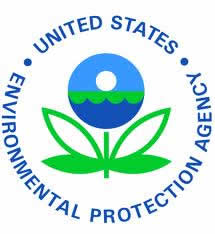
Common Conditions
Individual states typically develop PBRs if they find that certain conditions are prevalent in their regulated communities. For example, the Ohio EPA (OEPA) developed PBRs for categories of sources when there are more than 300 sources in the state; when the sources are similar in design and operation; when emissions from the sources are well understood and the sources do not have the potential to emit large quantities of air pollutants; when the sources do not need to employ add-on pollution control devices; and when the sources employ a proven type of technology or clean design that is unlikely to change significantly in the near future.
Using these criteria, the OEPA developed PBRs covering emergency electrical generators, pumps, and compressors; resin injection/compression molding equipment; small crushing and screening plants; remediation projects for soil-vapor extraction; remediation projects for soil-liquid extraction; auto body refinishing shops; gas stations with Stage I vapor controls; gas stations with Stage I and II vapor controls; natural gas-fired boilers and heaters; and small- and medium-sized printing facilities.
EPA’s SPCC regulation affects over 630,000 facilities. Is yours one? Download your EHS Essentials Kit—SPCC Plan Compliance now for all the tools you need to be in compliance. Download Now
U.S. EPA Approval
While states develop their own programs to control air pollution, those programs must be approved by the U.S. EPA, and the approval process extends to PBRs. One guidance document issued by U.S. EPA’s Region 7 office lists 13 criteria the Agency uses when asked by a state to approve minor source preconstruction PBRs:
- The state must provide a demonstration of the relationship between the production and emission-related limits chosen for the rule, showing that the rule is protective of the National Ambient Air Quality Standards (NAAQS).
- The definition of the sources covered by the rule should be clear.
- The rule should specify acceptable ranges or limits on operating conditions, such as production-related parameters and rates as well as emissions rates and emissions control parameters. The emissions limits should be set no higher than the maximum limits in the worst-case modeling scenario.
- Technical support for the rule should specify emissions control objectives, e.g., capture efficiency and control efficiency.
- The rule should specify the deadline (e.g., 30 or 60 days before construction) for both new and existing sources to apply for coverage and the effective start date of coverage.
- The rule should require notification from the source before coverage under the rule. The notification should include information necessary for the state to determine that the source is appropriately covered under the rule.
- The rule should require some type of affirmative action by the state on the notification; this would be, at a minimum, a written record of acknowledgment of receipt of the notification and the date coverage began.
- The rule should allow the state to deny coverage, at any time, for cause, under the rule on a case-by-case basis and instead require a construction permit.
- If mass balance procedures are used to verify coverage and/or compliance, the explicit methodology (e.g., equations and variable descriptions) should be made clear in the rule.
- The rule must require maintenance of records sufficient to ensure that the limits and conditions contained in the rule can be evaluated and enforced.
- The rule should address the need and approach for appropriate initial and periodic testing. In addition, the rule should address any required ongoing monitoring. For any required testing or monitoring, the appropriate test methods should be explicitly stated, or procedures included for coordinating with the regulatory agency.
- The rule should provide that, as a minimum, once a source has exceeded the limits or other requirements, the source is no longer exempted from the conventional permitting rules and is also subject to enforcement action.
- The rule should provide for notification to the state whenever the conditions contained in the rule have been exceeded or otherwise violated.
Don’t risk an EPA fine! Stay in compliance with our EHS Essentials Kit—SPCC Plan Compliance. Download now for instant access to comprehensive checklists, common violations, training materials, forms, and more. Download Now
Program Rigor
PBRs are considered a preferable option to site-specific preconstruction permits since many highly burdensome requirements associated with traditional permits are not included in PBRs. And, while states have considerable leeway to develop PBRs customized to the types of facilities in the state, the scrutiny by the U.S. EPA is always an important consideration. Thus, state programs that explicitly include some rigor in their PBR–such as public notification requirements, denial of PBRs to facilities with poor compliance histories, and revocation of the right to a PRB when emissions limits are exceeded– will tend to have an easier time obtaining and keeping the Agency’s approval.
